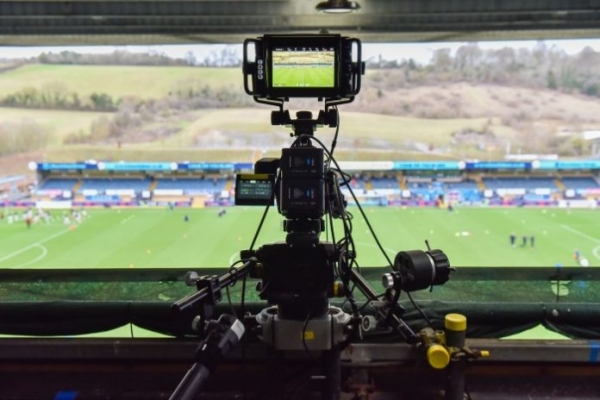In the world of outdoor broadcast, what do you do when you have an event in South Africa one day, and – let’s say – in the UK the next? It would be a logistical nightmare, not to mention expensive, to ship an OB van with all its kit and a whole production crew between locations in such a short space of time.

We spoke to broadcast services specialist, Timeline TV, about the innovative remote production solution it has designed exactly for this purpose.
Initially devised for live match coverage of the Women’s Super League (WSL) – the top league for women’s football in the United Kingdom – the system has also been used on international events such as the Landmarks Half Marathon, Vitality Big Half Marathon, Formula 1, Sail GP, World Superbikes and various other news and sporting events.
With just the camera operators needing to travel to events, Timeline’s system can be deployed at any venue – or, in the case of the WSL, any football ground in the UK – while delivering all production requirements from one central location.
Timeline’s managing director, Dan McDonnell, explains that the team chose Blackmagic URSA Broadcast cameras for the system: “We pride ourselves on delivering broadcast quality output for our creative partners, and the URSA Broadcast, when paired with our B4 lenses, delivers excellent images both on and off the pitch.”
When it comes to controlling the cameras, Timeline’s IP engineering team had to get creative. “Remote camera racking was essential and required a new approach to data transmission whilst keeping the on-site operation as simple as possible,” explains Dan. “There was nothing else on the market that would afford us the flexibility, quality or control unless we deployed a full OB.”
Built around the Blackmagic 3G-SDI Arduino Shield, and – using the manufacturer’s SDI camera control protocol – Timeline’s engineers developed a H.265-based 4G bonding and IP transmission solution that resides in a backpack. It integrates a transmitter and the camera control interface systems needed for acquisition, with live transmission back to the company’s Ealing Studios headquarters (in London, England), where coverage is produced.
“Essentially, we’ve eliminated the requirement for a full, static router, which normally is in place for a camera control unit to feed through. As well as the high resolution camera signals, an additional low res feed is sent carrying all the necessary camera settings,” Dan explains. “Working over IP channels provides reliable and consistent remote signal feeds from wherever we are around the country, and this, combined with Blackmagic’s open protocol, has given us the flexibility to devise a high-quality remote production solution that meets broadcasters’ strict standards for live sports coverage.”
Timeline is continuing to provide all Women’s Super League footage with the remote solution, but its efficiency and technical capabilities have been, and can be, easily transferred to other sporting leagues, tournaments and touring events.
“The ability to control an entire multi camera system via IP means that we can produce comprehensive coverage of high-profile events from anywhere in the world, without having to send a huge amount of staff or equipment out to the venues,” Dan concludes. “Once the operators are on site, it’s simply a matter of switching on the receivers and the cameras, and we’re ready to go.”
Source: Around the world with Timeline’s Remote Production
